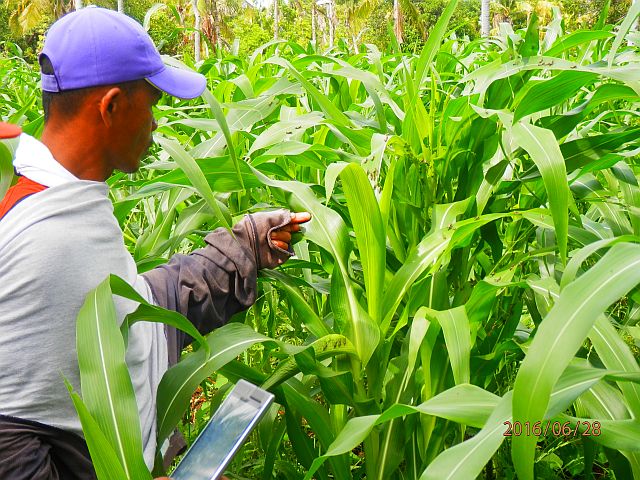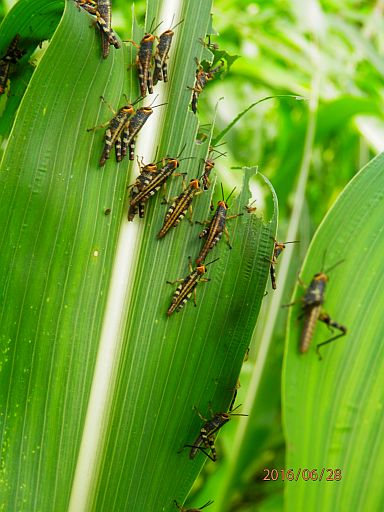Agri official: Locusts attacking farms in five north Cebu towns

A farmer checks on corn plants attacked by locusts (above) in one of the five northern towns in Cebu. At right, a close up of the locusts eating on the leaves of the corn plant.
Contributed photosA farmer checks on corn plants attacked by locusts (above) in one of the five northern towns in Cebu. At right, a close up of the locusts eating on the leaves of the corn plant.
(Contributed photos)
Locusts have attacked farms in five towns in northern Cebu.
Cebu Provincial Agriculturist Roldan Saragena said they have already sent teams to assess the damage in these towns and to exterminate the pests with pesticides.
Saragena said the affected towns are Bantayan and Sta. Fe in Bantayan Island, Pilar and San Francisco in Camotes Islands and San Remigio.
He said that while the presence of locusts was expected after the dry season especially in Bantayan Island which was considered a hotspot, this recent incident has been much worse than previous locust infestations.
“It’s worse this time. The last dry season, there were just a few hectares affected in Ginatilan and Oslob. But this time, the affected areas are much larger,” he said.
In the Bantayan town alone, Saragena said he was informed by the municipal agriculturist that around 50 to 80 hectares of farms in 13 barangays have been affected already.
This prompted the town, as well as the nearby Sta. Fe town to declare a state of calamity earlier this week in their areas due to the infestation.
In Camotes Islands, Saragena said they received reports of five affected barangays in Pilar town, but they still did not know the extent of damage in San Francisco.
For San Remigio, which was the latest reported affected area, only around two hectares have been infested.

A farmer checks on corn plants attacked by locusts (above) in one of the five northern towns in Cebu. At right, a close up of the locusts eating on the leaves of the corn plant. (Contributed photos)
Saragena said the locusts usually target corn plants, which were main crops in these areas, since the first week of June.
He said later these locusts would target other crops.
Saragena said the locusts were still in the nymph stage and still had no wings, which would make them easier to get rid of.
He said when they would grow wings, it would be more difficult to exterminate them.
The Regional Crop Protection Center (RCPC) of the Department of Agriculture 7 has also confirmed the reported locust infestations in the five areas.
Norma Repol, an entomologist and senior science specialist of the RCPC, told Cebu Daily News in a phone interview yesterday that they have started receiving the reports from the towns since last week.
A team already went to Camotes last week where they also found armyworms aside from locusts infesting the farms there. A team is currently in Bantayan Island validating the reports.
Today, Repol said they will send another team to San Remigio.
Repol said this was the first time that locusts infested San Remigio and Camotes Islands.
Disclaimer: The comments uploaded on this site do not necessarily represent or reflect the views of management and owner of Cebudailynews. We reserve the right to exclude comments that we deem to be inconsistent with our editorial standards.
